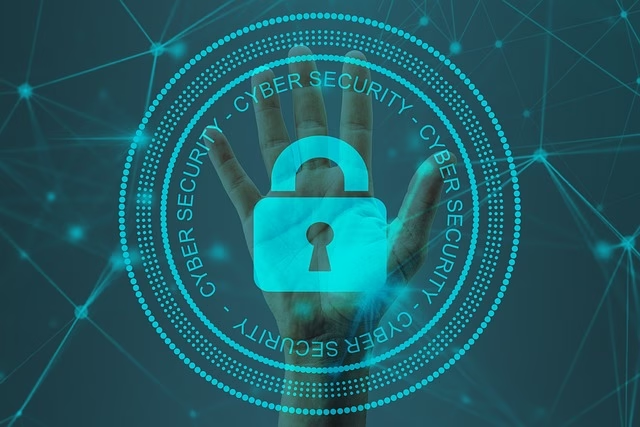Introduction to Network Security
In today’s fast-paced digital environment, the significance of network security cannot be overstated. As digital transformation accelerates across industries, safeguarding digital assets has become paramount. Organizations are no longer contending with isolated attacks but are facing a surge in persistent threats that require a shift from outdated, reactive defenses to proactive and comprehensive solutions. Among the progressive technologies gaining traction is network detection and response (NDR), which stands out for its ability to provide real-time, contextual threat detection and response capabilities.
Implementing robust network security involves a multi-layered approach surpassing traditional reliance on firewalls and antivirus software. The challenge lies in fortifying these defenses and ensuring that they evolve in tandem with the complex landscape of cyber threats. To adequately protect assets, organizations must integrate a variety of security measures tailored to anticipate and counteract cyber threats effectively.
Current Challenges in Network Security
The ever-evolving digital threat landscape presents numerous challenges for network security. From sophisticated ransomware attacks to covert social engineering tactics, the variety of potential attacks expands continuously. As cybercriminals often leverage advanced AI tools and exploit vulnerabilities faster than organizations can patch them, maintaining robust security is increasingly complex. According to a recent report, the velocity at which hackers operate requires cybersecurity measures that are both agile and adaptive.
The proliferation of Internet of Things devices and the shift towards remote work, accelerated by the global pandemic, have expanded the attack surfaces available to cyber criminals. This results in a pressing need for flexible security protocols designed to prevent breaches and minimize their impact when they occur. Organizations must adopt mechanisms for swift threat containment, comprehensive risk assessments, and resilient recovery plans, all of which are essential components of an effective security posture in today’s interconnected world.
Innovative Technologies and Methods
As cyber threats become more complex, innovative technological solutions have become vital tools for enhancing network security. Technologies are leading the charge, offering unprecedented capabilities to predict and mitigate cyber threats more effectively. ML algorithms can examine large datasets to identify patterns that could indicate potential threats, thereby enabling more precise and prompt reactions.
Blockchain technology is another area of innovation known for its ability to provide secure, decentralized data management solutions. By creating a transparent, tamper-proof record of transactions, blockchain strengthens data integrity and secures communication channels against unauthorized access. The introduction of these technologies has led to the development of ‘smart’ security systems that are both predictive and reactive, significantly enhancing the layers of protection available to organizations. Integrating such cutting-edge methodologies into security frameworks can dramatically fortify an organization’s defenses, allowing it to stay ahead of potential threats.
Case Studies in Successful Implementation
The practical application of advanced network security strategies can be seen across various sectors, resulting in substantial improvements. For example, the financial industry has successfully adopted AI-powered anomaly detection systems to thwart fraud. These systems offer real-time transaction pattern analysis, instantaneously identifying fraudulent activities and allowing for quicker response times.
In the health sector, adopting blockchain technology for securing patient records has enhanced data protection and compliance with regulatory standards such as HIPAA. These case studies illustrate the tangible benefits of integrating cutting-edge technologies into traditional security frameworks and highlight the importance of ongoing adaptation and innovation to counteract evolving cyber threats effectively.
The Role of Artificial Intelligence
Artificial intelligence is revolutionizing cybersecurity, offering new ways to augment organizational defenses. AI systems can process and analyze substantial datasets far more rapidly than human operators, allowing for real-time threat detection based on identifying unusual patterns. This rapid analysis capability enables organizations to respond swiftly to threats, often neutralizing them before they can cause significant harm.
Despite its profound advantages, AI must be leveraged with caution. While AI systems are robust, they should complement—not replace—human expertise. Cybersecurity professionals play a vital role in overseeing AI functionalities, making judgments based on contextual understanding, and managing AI-driven processes for detecting and mitigating threats. When integrated into a comprehensive network security strategy, AI acts as a force multiplier, extending human capacity and precision in threat detection and response.
Building a Proactive Security Culture
Effective cybersecurity goes beyond implementing technological solutions; it embodies cultivating a proactive security culture within the organization. Fostering this culture entails equipping employees to identify and address possible threats, turning them into engaged contributors to the organization’s cybersecurity approach. Education and training programs focused on common cyber threats such as phishing and social engineering equip employees with the knowledge to identify and report suspicious activities.
Creating a culture of shared responsibility fosters an environment where security is prioritized by all employees, enhancing their accountability. Such efforts lead to a more resilient organization with improved defensive capabilities, as employee vigilance becomes a powerful asset in thwarting potential vulnerabilities. Encouraging collaborative efforts across various departments can strengthen the organization’s comprehensive security posture.
Future Trends in Network Security
Looking to the future, network security will be shaped by continued technological innovations and emergent challenges. Quantum computing can transform encryption techniques. While it promises unprecedented levels of security, it simultaneously poses threats to current cryptographic standards, demanding proactive adaptation by organizations.
Stringent data protection regulations worldwide are compelling organizations to adopt more rigorous security practices. Advanced technologies such as automated security protocols and integrated cyber threat intelligence are gaining momentum as pivotal tools for maintaining secure systems.
Conclusion
Organizations must move beyond traditional security methods, embracing innovative technologies while fostering a proactive security culture. By doing so, they can effectively safeguard their digital assets against sophisticated threats and ensure business continuity. Adaptive strategies that blend technological advancements with human vigilance will empower companies to defend against present dangers and anticipate and prepare for future challenges, securing a resilient operational framework in the digital age.

